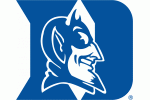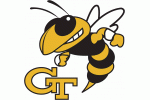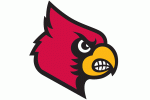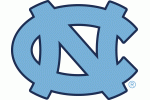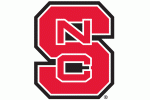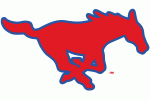“Wakey leaks” is making it even tougher for media to do their jobs.

Without getting into the political atmosphere, there’s a rampant anti-press sentiment growing in the country. And while it’s being met with anger and bombast in some parts of the landscape, in others, the backlash is a bit more subdued (but still very present).
That also hits home for sports media, where writers are increasingly losing their jobs to “pivots toward video content,” and shrinking budgets continue to make it harder for both local and national outlets to cover teams to the extent they’d like to.
Wakey Leaks, last year’s gameplan-leaking scandal at Wake Forest, makes that job even more of an uphill climb this year as coaches (already paranoid by profession) close ranks to keep the same thing from happening to them. It’s happening with the Syracuse Orange as well, as evidenced by this exchange between our own Julian Whigham and SU coach Dino Babers on Sunday:
Made my early pitch across the field:
— Julian Whigham (@JulianWhigham) August 6, 2017
Me: "I'm just tryna do my job coach!"
Babers: "Yeah that's what the guy from Wake said."
The pitch referred to above is around the team’s current policy of 10-minute openings for media to attend practice. Julian and other media members have expressed frustration over the policy because it doesn’t really allow for much insight. Those early minutes of practice are minor drills, warm-ups and stretching. The meat of what we all want to report on largely happens behind closed doors.
However, this is the environment that’s been created at Syracuse after the Wake incident -- one which, as Chris Libonati, formerly of the Daily Orange, correctly points out, actually involved the Deacons’ own IMG radio station (not external media) -- is becoming the norm elsewhere, too.
#NotreDame has a new media policy preventing reporting of specific formations, plays, personnel groupings. Or injuries until ND gives update
— Stephen Brooks (@StephenM_Brooks) August 5, 2017
#LSU announces that it is completely closing preseason camp. No media access at all.
— Ross Dellenger (@RossDellenger) July 28, 2017
School to provide photos and videos from practice.
Texas doesn't want reporters to stand behind Tom Herman in its bizarre new media policy https://t.co/Kb49iC7ctd via @forthewin
— Roger Breslin (@RogerBreslin) August 3, 2017
There are plenty more examples of restrictions running rampant all over the FBS landscape. Gameplans have always been tightly-guarded secrets, but now every second of every practice is being viewed as the Dead Sea Scrolls. Policies put in place by Notre Dame and LSU (among other schools) basically force local reporters to either a) just make up ideas with little fact to back it up, or b) just take the information given to them as the only possible fact. Neither is what journalism’s about.
I also know we’re getting into a little too much inside baseball here — a conversation about the media by the media, which may not seem to affect the fans. But it certainly does, as closed-door policies can directly harm the quality of stories fans get to read about teams.
Redirecting back to Syracuse: Where does it make sense for the Orange to keep the doors closed and where would it make more sense to let access be a valuable tool for everyone?
When Babers arrived at SU, he was tight-lipped about his system and scheme, something that is typical of any coach — but especially one running any sort of spread offense. Practices were largely closed off last year, assistants were not available to media and neither were first-year players. Folks here, at Syracuse.com and elsewhere covered the team, but from afar. We were still left guessing on a lot of things, waiting until the opening snaps against Colgate to really get our first glimpses of the offense (just like the fans).
In many ways, the closed-off approach can be the right call. This isn’t to criticize or begrudge Babers and SU Athletics for a policy that’s being implemented to help the program succeed. The less that’s known about the Orange’s gameplan, the more likely it’ll be effective on Saturdays. And especially in these early days of the Babers era, there’s still a lot of implement, and you want to keep it under wraps until it’s a finished product (or if you prefer, use Babers’s famed cake metaphors instead).
But there’s also a middle ground. An area where Syracuse’s small but dedicated local media group can get the nuggets they need to write engaging stories about the team, and get people excited about the upcoming season. The short bits of camera time some players get -- even for just a minute or two -- are extremely helpful.
Julian’s updates from practice have been great since camp started a week ago, but they’re also created with his own intimate knowledge of the program and its players, rather than the importance of the proceedings in the opening minutes of practice.
Especially in these early days of minimal pads and just shaking the rust off, is there a ton of harm in seeing which players are looking like they’ve improved during the offseason? Which have added muscle? Which freshmen could end up earning a larger role in year one?
Even if it’s just 20-30 minutes of time instead, there’s some benefit to that little bit of extra exposure. You get a better read on position battles, start generating more insights on how players are moving, throwing, catching, etc. We know the offense goes fast. That’s no secret. But who’s going fastest within the offense in camp so far?
This isn’t a plea for more access. It’s an explanation of why some of it’s limited, while also noting why perhaps some of it shouldn’t be. Babers and every head coach in America have a right to be paranoid given the amount of money that’s in college football. But there’s a balance between protecting your team (doing your job) and shutting the media out (stopping them from doing theirs).
Maybe this falls flat. But at least there’s a little more of an open dialogue on what each side is gaining and losing in the current environment.





